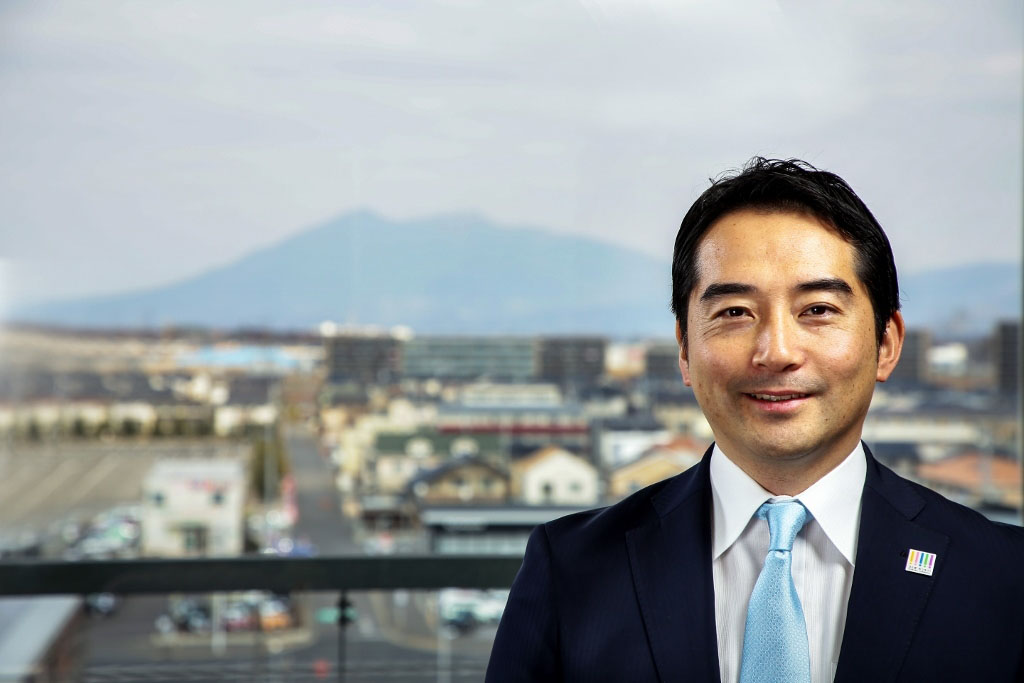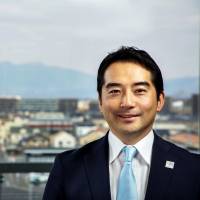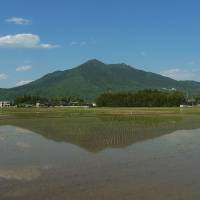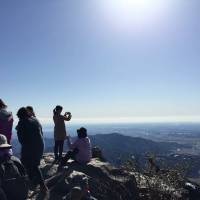Tsukuba Mayor Tatsuo Igarashi aims to further diversify the satoyama (traditionally, woodlots shared and maintained by local residents) environment in Tsukuba's rural areas that needs to be passed down to future generations. To that end, Igarashi hopes to make the most of the knowledge and technology accumulated in research and development institutions based in the city.
"Satoyama represents one of the largest factors for sustainability," Igarashi stressed in a recent interview with The Japan Times. "We need to rediscover value in satoyama, which is essential for local communities to create cycles of nature and connect regional resources in a better way."
Located around 50 kilometers northeast of Tokyo and about 45 minutes away by train, the city of 230,000 features lush nature highlighted by the famed Mount Tsukuba. The city and other municipalities in central and southern Ibaraki Prefecture are home to Mt. Tsukuba Area Geopark, where relevant parties commit to the protection and use of its geological heritage, as well as work toward the sustainable development of local areas.
Igarashi said Tsukuba works to implement measures to further capitalize on its rural environment, including the geopark, so that residents and visitors alike can better understand the region's resources and geography. The mayor thinks that academically and scientifically analyzing Tsukuba's natural resources through a collection of varied knowledge and technology will yield hints and keys to achieving this.
"There is a science and technology base in Tsukuba," he noted. "The city boasts around 30 national research institutions and the number rises to close to 300 if those from the private sector are included."
The host of the 1985 International Exposition is known as one of the largest science and technology sites in the country, featuring the University of Tsukuba, the Japan Aerospace Exploration Agency's Tsukuba Space Center, the Geospatial Information Authority of Japan and other highly acclaimed institutions.
"Nature probably sees human engagement as an obstacle, but promotion of satoyama would enhance natural diversity with people's involvement," Igarashi said. "I feel we're not supposed to incorporate scientific technology into the ecosystem and satoyama yet, but our efforts look to the coexistence of science and nature. We need to take an approach unique to Tsukuba."
There are already some projects in place. The city and relevant parties have conducted a "geo tour," specifically targeting women to join in on the increasing popularity of trips among female friends, as well as short trips around the city where a leg of the tour involves riding a two-wheeled Segway.
Moreover, Igarashi pointed out that the city has allocated a budget for the next fiscal year, starting in April, for an educational program that will see the city's youth and families with small children take part in events such as interacting with the cutting-edge research and researchers at institutions and in nature, including Mount Tsukuba.
"If this educational program works well, I'd also like to bring in students from Tokyo to take part in this course in the future," the mayor said. "Even though Tsukuba is not that far from Tokyo, the city has rich natural resources visitors can really appreciate. I'd like to boost the number of children in the metropolitan area who take an interest, and in the long term increase the number of families who move to our city."
In a bid to entice international visitors, Igarashi noted the city is eyeing resources in the city's rural communities that can be used to offer visitors unique experiences.
"There are many well-preserved traditional Japanese houses in the area near Mount Tsukuba," the mayor explained. "With the assistance from the owners of those houses, we aim to create a platform so that foreign people can stay there after fully enjoying the rich nature."
He also noted that he would like to add a unique element to the potential accommodation plan, namely offering opportunities where tourists can experience Tsukuba's science and technology firsthand or take part in a geo tour.
Last but not least, Igarashi also places significant value on sustainability in the city's policy front. Tsukuba has worked on incorporating the U.N.'s Sustainable Development Goals (SDGs) into its policies. Set in 2015, the SDGs have 169 targets that cover a wide range of social and economic development issues.
In line with this effort, the city hosted a forum on the SDGs in February, providing people with opportunities to better understand the concept through relevant lectures and a panel discussion. At the forum, it was also announced that Tsukuba will officially strive to become a "sustainable city."
"I'd like to send out information on satoyama using various opportunities," Igarashi said. "I hope many more people will visit our city, drawn to what the city offers, and at the same time, I'd be happy if the citizens were to develop a further fascination with it."
This series introduces municipalities and local companies promoting the beauty and excellence of deep Japan.




















With your current subscription plan you can comment on stories. However, before writing your first comment, please create a display name in the Profile section of your subscriber account page.